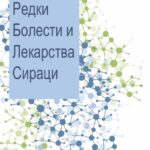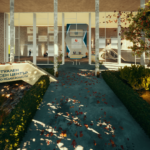 The editorial in Rare Diseases and Orphan Drugs discussed the main challenges to the long-term sustainability and effectiveness of the European Reference Networks (ERMs), mainly clarifying the legal status of these structures, defining mechanisms of their engagement, collaboration and communication within the national health systems, seeking sources of funding and last but not least, generation of a sustainable product. Now, 2 years later, we come back to this topic. Not all of the above mentioned issues have been resolved, but one thing is clear – the ERMs are here to stay. The second stage of their expansion with new expert centers is expected to start in the autumn of 2020. The current pandemic clearly shows that developing and promoting services in an electronic environment is a high-return investment. The ERMs faces the unique opportunity not only to justify the work and efforts of doctors, patients, health authorities and the academy so far, but also to make a leap into the future. This task is more than ambitious and the challenges are not insignifican – the long-term sustainability and efficiency not only of the ERMs, but of the health systems in the European Union. For more information click here.
The editorial in Rare Diseases and Orphan Drugs discussed the main challenges to the long-term sustainability and effectiveness of the European Reference Networks (ERMs), mainly clarifying the legal status of these structures, defining mechanisms of their engagement, collaboration and communication within the national health systems, seeking sources of funding and last but not least, generation of a sustainable product. Now, 2 years later, we come back to this topic. Not all of the above mentioned issues have been resolved, but one thing is clear – the ERMs are here to stay. The second stage of their expansion with new expert centers is expected to start in the autumn of 2020. The current pandemic clearly shows that developing and promoting services in an electronic environment is a high-return investment. The ERMs faces the unique opportunity not only to justify the work and efforts of doctors, patients, health authorities and the academy so far, but also to make a leap into the future. This task is more than ambitious and the challenges are not insignifican – the long-term sustainability and efficiency not only of the ERMs, but of the health systems in the European Union. For more information click here.
Featured posts
 Advancement in technology has improved recognition of genetic etiologies of disease, which has impacted diagnosis and management of rare disease patients in the pediatric pulmonary clinic. This review provides an overview of genetic conditions that are likely to present with pulmonary features and require extensive care by the pediatric pulmonologist. Increased familiarity with these conditions allows for improved care of these patients by reducing time to diagnosis, tailoring management, and prompting further investigation into these disorders. For more information click here.
Advancement in technology has improved recognition of genetic etiologies of disease, which has impacted diagnosis and management of rare disease patients in the pediatric pulmonary clinic. This review provides an overview of genetic conditions that are likely to present with pulmonary features and require extensive care by the pediatric pulmonologist. Increased familiarity with these conditions allows for improved care of these patients by reducing time to diagnosis, tailoring management, and prompting further investigation into these disorders. For more information click here.
 Langerhans cell histiocytosis (LCH) is a clonally expanding neoplasm characterized by the accumulation of CD1a + CD207 + myeloid dendritic cells. As LCH is a rare disease and is presumed to mainly affect children, the clinical features and treatment outcomes of adult LCH have been poorly documented. We retrospectively reviewed 53 adult patients with LCH who were referred to the Institute of Medical Science, the University of Tokyo from 2005 to 2018. The median age at diagnosis was 42 years with a slight female predominance (57%). The time between onset and diagnosis varied among patients (median, 8 months; range, 0-144 months). In total, 40% of the patients had single organ involvement and 60% had multiple organ involvement. Overall, the most frequently affected organ was bone (62%), followed by the central nervous system (34%), and the lung (28%). Twenty-six patients required systemic treatment, and 25 patients underwent the Special C regimen. For more information click here.
Langerhans cell histiocytosis (LCH) is a clonally expanding neoplasm characterized by the accumulation of CD1a + CD207 + myeloid dendritic cells. As LCH is a rare disease and is presumed to mainly affect children, the clinical features and treatment outcomes of adult LCH have been poorly documented. We retrospectively reviewed 53 adult patients with LCH who were referred to the Institute of Medical Science, the University of Tokyo from 2005 to 2018. The median age at diagnosis was 42 years with a slight female predominance (57%). The time between onset and diagnosis varied among patients (median, 8 months; range, 0-144 months). In total, 40% of the patients had single organ involvement and 60% had multiple organ involvement. Overall, the most frequently affected organ was bone (62%), followed by the central nervous system (34%), and the lung (28%). Twenty-six patients required systemic treatment, and 25 patients underwent the Special C regimen. For more information click here.
Role, function and challenges of multidisciplinary centres for neurofibromatosis type 1 syndrome
 Neurofibromatosis type 1 (NF1) syndrome is a common rare/orphan disease that manifests itself early in the paediatric age. It imposes a considerable burden upon patients as well as on caregivers. Decisions regarding optimal care often rely on several medical instances working together as a team. The authors reviewed the literature and supplied a description of their own clinical work at the NF1 centres. The experience of a multidisciplinary teamwork of three NF centres was summarized in order to enhance awareness for possible multidisciplinary ways of delivery of health and health-related aspects of care to NF1 patients. Both population-focused research centres and family-focused centres were reviewed. For more information click here.
Neurofibromatosis type 1 (NF1) syndrome is a common rare/orphan disease that manifests itself early in the paediatric age. It imposes a considerable burden upon patients as well as on caregivers. Decisions regarding optimal care often rely on several medical instances working together as a team. The authors reviewed the literature and supplied a description of their own clinical work at the NF1 centres. The experience of a multidisciplinary teamwork of three NF centres was summarized in order to enhance awareness for possible multidisciplinary ways of delivery of health and health-related aspects of care to NF1 patients. Both population-focused research centres and family-focused centres were reviewed. For more information click here.
 The 11th National Conference for Rare Diseases and Orphan Drugs will be held online on 11-12 September 2020 at the Virtual Congress Venue of the Institute for Rare Diseases. The main topic of the event will be the novelties and current trends in the diagnosis, treatment and follow-up of rare diseases, the development of European reference networks and access to innovation in the field of rare diseases.
The 11th National Conference for Rare Diseases and Orphan Drugs will be held online on 11-12 September 2020 at the Virtual Congress Venue of the Institute for Rare Diseases. The main topic of the event will be the novelties and current trends in the diagnosis, treatment and follow-up of rare diseases, the development of European reference networks and access to innovation in the field of rare diseases.
The registration for medical specialists, PhD students, students, patients and patient organizations is FREE OF CHARGE until 15 August 2020!
The Virtual Congress Venue of the Institute for Rare Diseases is now open for registrations. The website of the Virtual Congress Venue is: https://vcv.raredis.org/.
Subscribe to our YouTube channel, where you can find a short video, explaining how the Internet platform of the Virtual Congress Venue works: https://youtu.be/60ugYXsuQjs
We are expecting you at the Virtual Congress Venue!
 Pulmonary hypertension (PH) is a pulmonary vascular disease characterized by pulmonary arterial remodeling and vasoconstriction leading to elevated pulmonary artery pressure and, ultimately, right heart failure. So far, few cases of COVID-19 disease in patients with PH have been reported. Caution is warranted in interpreting this observation as data are evolving and several factors may influence the number of reported cases of PH and COVID-19. Social distancing and quarantine could play a role, especially for patients with chronic diseases who might be more vigilant of their potential for respiratory infection. In addition, PH is a rare disease, and because testing is not universal, we could be underestimating the number of cases. Other hypothetical factors to consider are the underlying pathophysiology of PH and the medications used to treat PH and their implications in COVID-19. For more information click here.
Pulmonary hypertension (PH) is a pulmonary vascular disease characterized by pulmonary arterial remodeling and vasoconstriction leading to elevated pulmonary artery pressure and, ultimately, right heart failure. So far, few cases of COVID-19 disease in patients with PH have been reported. Caution is warranted in interpreting this observation as data are evolving and several factors may influence the number of reported cases of PH and COVID-19. Social distancing and quarantine could play a role, especially for patients with chronic diseases who might be more vigilant of their potential for respiratory infection. In addition, PH is a rare disease, and because testing is not universal, we could be underestimating the number of cases. Other hypothetical factors to consider are the underlying pathophysiology of PH and the medications used to treat PH and their implications in COVID-19. For more information click here.
 Retinitis pigmentosa and Leber’s congenital amaurosis are rare inherited retinal distrophies that lead to irreversible blindness. The remarkable genetic heterogeneity of these diseases is due not only to the large number of genes involved, but also to the fact that mutations in a particular gene can cause different phenotypic variants, varying in severity, disease progression and inheritance. Logically, there is no unified classification that combines all clinical and genetic forms of the retinal pigment dystrophies. In this context, epidemiological research in clinical practice encompasses the studied contingents by different clinical-genetic and age criteria. This makes it extremely difficult to study and evaluate the epidemiology of the various forms of inherited retinal dystrophy. Despite the existence of clinical experience and a thorough knowledge of these diseases in Bulgaria, there is no published epidemiological data for the local population. This publication aims to analyze epidemiological data on retinitis pigmentosa and Leber congenital amaurosis and to provide an epidemiological assessment of the prevalence of these diseases in Bulgaria. For more information click here.
Retinitis pigmentosa and Leber’s congenital amaurosis are rare inherited retinal distrophies that lead to irreversible blindness. The remarkable genetic heterogeneity of these diseases is due not only to the large number of genes involved, but also to the fact that mutations in a particular gene can cause different phenotypic variants, varying in severity, disease progression and inheritance. Logically, there is no unified classification that combines all clinical and genetic forms of the retinal pigment dystrophies. In this context, epidemiological research in clinical practice encompasses the studied contingents by different clinical-genetic and age criteria. This makes it extremely difficult to study and evaluate the epidemiology of the various forms of inherited retinal dystrophy. Despite the existence of clinical experience and a thorough knowledge of these diseases in Bulgaria, there is no published epidemiological data for the local population. This publication aims to analyze epidemiological data on retinitis pigmentosa and Leber congenital amaurosis and to provide an epidemiological assessment of the prevalence of these diseases in Bulgaria. For more information click here.
 The assessment of innovation and the value of new medicinal therapies, has been repeatedly commented in “Rare Diseases and Orphan Drugs” journal. This is a key point in health technology assessment, which is often used by industry to justify the high cost of a particular drug. Innovation itself is a broad concept. However, when it comes to the value and assessment of health technologies, an important dimension of the innovation of a therapy is its added benefits. Not benefits, but added benefits. This is the link between pricing and cost of treatment with the health technology in question. For more information click here.
The assessment of innovation and the value of new medicinal therapies, has been repeatedly commented in “Rare Diseases and Orphan Drugs” journal. This is a key point in health technology assessment, which is often used by industry to justify the high cost of a particular drug. Innovation itself is a broad concept. However, when it comes to the value and assessment of health technologies, an important dimension of the innovation of a therapy is its added benefits. Not benefits, but added benefits. This is the link between pricing and cost of treatment with the health technology in question. For more information click here.
 The new issue of our scientific journal Rare Diseases and Orphan Drugs is now online. The issue contains 4 publications on various topics. The editorial is “Innovation, added benefits and pricing in health technology assessment”. If you would like to receive the latest information on rare diseases and orphan drugs, how the diagnostics and treatment is performed Bulgaria, please follow the link.
The new issue of our scientific journal Rare Diseases and Orphan Drugs is now online. The issue contains 4 publications on various topics. The editorial is “Innovation, added benefits and pricing in health technology assessment”. If you would like to receive the latest information on rare diseases and orphan drugs, how the diagnostics and treatment is performed Bulgaria, please follow the link.
 The vasculitides are a group of rare diseases with different manifestations and outcomes. New therapeutic options have led to the need for long-term registries. The Rheumatic Diseases Portuguese Register, Reuma.pt, is a web-based electronic clinical record, created in 2008, which currently includes specific modules for 12 diseases and > 20,000 patients registered from 79 rheumatology centres. On October 2014, a dedicated module for vasculitis was created as part of the European Vasculitis Society collaborative network, enabling prospective collection and central storage of encrypted data from patients with this condition. All Portuguese rheumatology centres were invited to participate. Data regarding demographics, diagnosis, classification criteria, assessment tools, and treatment were collected. We aim to describe the structure of Reuma.pt/vasculitis and characterize the patients registered since its development. For more information click here.
The vasculitides are a group of rare diseases with different manifestations and outcomes. New therapeutic options have led to the need for long-term registries. The Rheumatic Diseases Portuguese Register, Reuma.pt, is a web-based electronic clinical record, created in 2008, which currently includes specific modules for 12 diseases and > 20,000 patients registered from 79 rheumatology centres. On October 2014, a dedicated module for vasculitis was created as part of the European Vasculitis Society collaborative network, enabling prospective collection and central storage of encrypted data from patients with this condition. All Portuguese rheumatology centres were invited to participate. Data regarding demographics, diagnosis, classification criteria, assessment tools, and treatment were collected. We aim to describe the structure of Reuma.pt/vasculitis and characterize the patients registered since its development. For more information click here.
